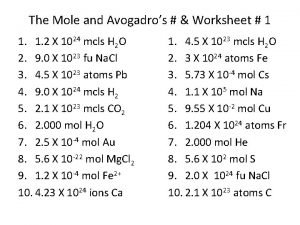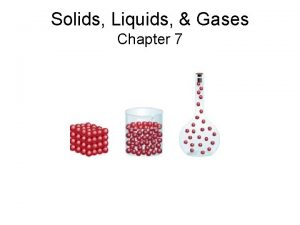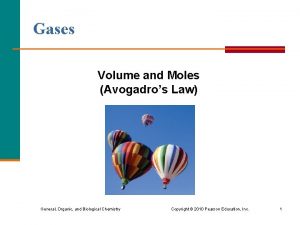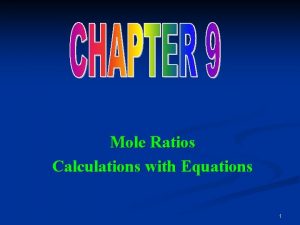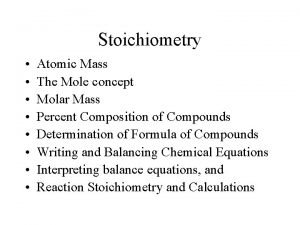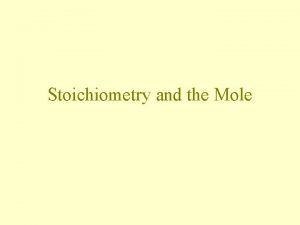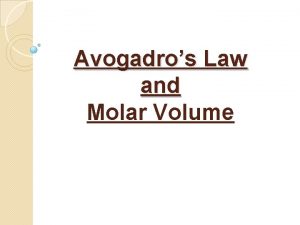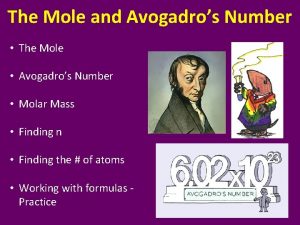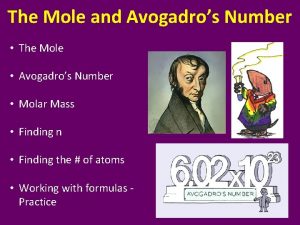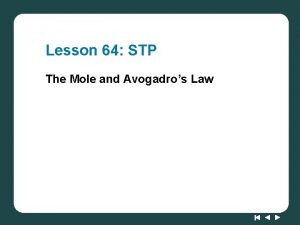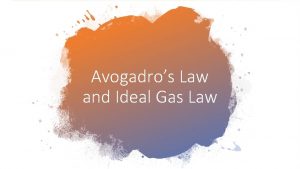Lesson 64 STP The Mole and Avogadros Law









- Slides: 9

Lesson 64: STP The Mole and Avogadro’s Law

Chem. Catalyst There are two balloons. One is filled with helium, He, and the other with carbon dioxide, CO 2. 1. Describe what happens when the balloons are released. 2. For the two balloons, state whether these properties are the same or different, and explain why: • pressure, P • number density, n/V • temperature, T • number, n • volume, V • density, m/V • mass, m

Key Question How do chemists keep track of the number of gas particles?

You will be able to: • • • define a mole explain Avogadro’s law define standard temperature and pressure

Prepare for the Activity Work individually. Chemists use a unit called a mole to describe the number of gas particles in a sample. 1 mole = 602, 000, 000, 000

Discussion Notes Standard temperature and pressure, STP: One atmosphere of pressure and a temperature of 273 Kelvin. Equal volumes of gases contain equal numbers of gas particles if the temperature and pressure are the same.

Discussion Notes (cont. ) There are exactly 602, 000, 000, 000 particles in 22. 4 L at STP. Mole: A unit invented by chemists to count large numbers of gas particles. There are 602, 000, 000, 000 particles in 1 mole. This is 602 sextillion.

Wrap Up How do chemists keep track of the number of gas particles? • Avogadro’s law states that equal volumes of gases contain the same number of particles if they are at the same temperature and pressure. This holds true for all gases. • Gases are often compared at a standard temperature and pressure of 1 atm and 273 K. This is also referred to as STP. • At STP, any gas will occupy 22. 4 L and consist of exactly 602 sextillion, or 602, 000, 000, particles.

Check-In One balloon contains 22. 4 L of Ar, argon gas, and another balloon contains 22. 4 L of Ne, neon gas. Both balloons are at 273 K and 1 atm. 1. Do the balloons contain the same number of atoms? Why or why not? 2. Will the balloons have the same mass? Why or why not?

